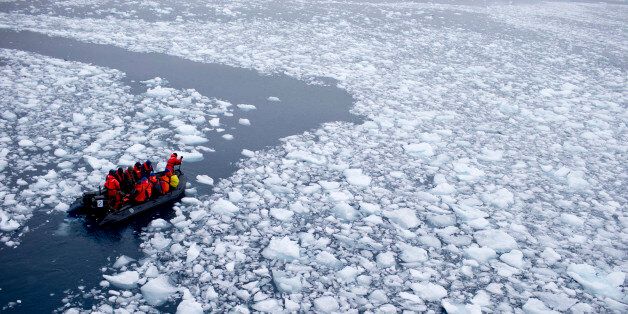
"One Arctic: Shared Opportunities, Challenges and Responsibilities," is the overarching theme for the United States Chairmanship of the Arctic Council, which will focus attention on addressing climate change, stewardship of the Arctic Ocean, and improving economic and living conditions in the Arctic. We, the five Nordic ambassadors to the United States, will share our opinions on these topics on June 1, when we get together for a one-hour Twitter Town Hall.
The Nordic countries share a deep commitment to the Arctic region and the Nordic part of the Arctic is highly developed. However, it is important not only to address Arctic issues locally, but to aim more broadly.
What happens in the Arctic does not stay in the Arctic. The effects of the changing climate and diminishing sea ice, the economic opportunities present in the form of minerals and energy resources, new and more efficient shipping routes, and increased tourism to the region will only increase its importance in the years to come.
According to experts, approximately one-third of the world's remaining oil and natural gas reserves are to be found in the Arctic. There needs to be a balance between protecting the Arctic environment and the need for resource development and management. The joint pursuit of responsible Arctic stewardship is necessary. This includes sustainable economic, social and ecological development, and the application of scientific research and traditional knowledge to increase understanding of the Arctic.
For all of the possibilities emerging with the increasing accessibility and economic and strategic interests in the Arctic, the rapid development in the Arctic region also presents real problems for the international community.
Addressing and adapting to climate change is vital because it is happening at an accelerated pace in the Arctic. The Arctic is warming twice as fast as the global average. This is mainly because melting snow and ice expose a darker surface, which increases the amount of solar energy absorbed. The regional warming leads to less sea ice, melting of glaciers and of the Greenland ice cap. Climate change in the Arctic affects the rest of the world with rising sea levels and changing weather patterns.
Improving the economic and living conditions of people living in the Arctic is also a key agenda item, with potential projects ranging from developing renewable energy resources to improving telecommunications. It is important that the development of the Arctic is in full accordance with the interests of the people inhabiting the region.
International cooperation and partnership is needed in most, if not all, of these areas. It is essential that the international community stands together to secure economic growth, stability and peace. The Arctic is, and should remain, a region of low tension with a high degree of international cooperation based on international law and the 2013 Vision for the Arctic.
The United States is an Arctic state. Alaska -- which constitutes 16 percent of the U.S. landmass and sits on the Arctic Circle -- puts the country solidly in that category. On April 25 2015 the United States took over the chairmanship of the Arctic Council for the second time. This two-year position rotates among the eight Arctic States -- Canada, the Kingdom of Denmark, Finland, Iceland, Norway, Russia, Sweden, and the United States. The Arctic Council is a powerful intergovernmental platform for managing and shaping the challenges and opportunities related to the Arctic region.
Join us, the five Nordic ambassadors to the United States, as we get together for a one hour Twitter Town Hall on June 1 at 2 pm. The Nordic Twitter Town Hall will be the first of its kind focusing on the Arctic and the various issues related to this unique region. If you are curious to know more about the Nordic perspective on Arctic development, Nordic values in general, transatlantic relations, trade issues, or other subjects -- feel free to ask!
Finding solutions to common global challenges will have to include a variety of views and approaches. Common ground must be found on that basis. We will be ready to answer your questions, and hear your opinions on how the Nordic countries and the United States can work together to ensure the prosperous and environmentally sound future of this unique region.
We, Kåre R. Aas of Norway (@kareraas), Geir H. Haarde of Iceland (@Ghaarde), Ritva Koukku-Ronde of Finland (@AmbKoukkuRonde), Björn Lyrvall of Sweden (@Bjornly) and Peter Taksøe-Jensen of Denmark (@petertaksoe), want to listen to suggestions, ideas, thoughts, and maybe even help make the connections that can change the future.
Join us and #AskNordicAmbs on June 1 at 2 p.m.
Impatient to get started? You can already submit a question for the Nordic ambassadors by tweeting a question that includes the hashtag #AskNordicAmbs.
Not on Twitter? Send your question via email to wasamb@um.dk from now until May 29, and it will be posted during the Twitter Q&A session (Please limit your question to Twitter's character limit).
Read more about the Arctic Council or follow the council on Twitter. For an American perspective on the Arctic, visit @USArctic, #OneArctic or #Arctic.
If you want to learn about Nordic co-operation and the Nordic Region, you can visit the website of the Nordic Council of Ministers or follow discussions on Twitter using the hashtag #norden2015.